Function of longitudinal vs circular muscle fibers in esophageal peristalsis, deduced with mathematical modeling
- PMID: 17457963
- PMCID: PMC4146916
- DOI: 10.3748/wjg.v13.i9.1335
Function of longitudinal vs circular muscle fibers in esophageal peristalsis, deduced with mathematical modeling
Abstract
We summarize from previous works the functions of circular vs. longitudinal muscle in esophageal peristaltic bolus transport using a mix of experimental data, the conservation laws of mechanics and mathematical modeling. Whereas circular muscle tone generates radial closure pressure to create a local peristaltic closure wave, longitudinal muscle tone has two functions, one physiological with mechanical implications, and one purely mechanical. Each of these functions independently reduces the tension of individual circular muscle fibers to maintain closure as a consequence of shortening of longitudinal muscle locally coordinated with increasing circular muscle tone. The physiological function is deduced by combining basic laws of mechanics with concurrent measurements of intraluminal pressure from manometry, and changes in cross sectional muscle area from endoluminal ultrasound from which local longitudinal shortening (LLS) can be accurately obtained. The purely mechanical function of LLS was discovered from mathematical modeling of peristaltic esophageal transport with the axial wall motion generated by LLS. Physiologically, LLS concentrates circular muscle fibers where closure pressure is highest. However, the mechanical function of LLS is to reduce the level of pressure required to maintain closure. The combined physiological and mechanical consequences of LLS are to reduce circular muscle fiber tension and power by as much as 1/10 what would be required for peristalsis without the longitudinal muscle layer, a tremendous benefit that may explain the existence of longitudinal muscle fiber in the gut. We also review what is understood of the role of longitudinal muscle in esophageal emptying, reflux and pathology.
Figures







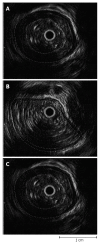
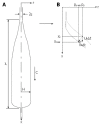
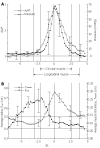

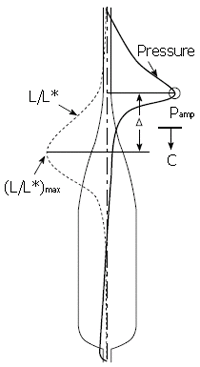
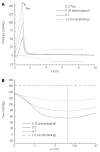
Similar articles
-
The mechanical advantage of local longitudinal shortening on peristaltic transport.J Biomech Eng. 2002 Feb;124(1):94-100. doi: 10.1115/1.1427700. J Biomech Eng. 2002. PMID: 11871611
-
Local longitudinal muscle shortening of the human esophagus from high-frequency ultrasonography.Am J Physiol Gastrointest Liver Physiol. 2001 Oct;281(4):G1022-33. doi: 10.1152/ajpgi.2001.281.4.G1022. Am J Physiol Gastrointest Liver Physiol. 2001. PMID: 11557523
-
Muscle shortening along the normal esophagus during swallowing.Dig Dis Sci. 2006 Jan;51(1):105-9. doi: 10.1007/s10620-006-3092-4. Dig Dis Sci. 2006. PMID: 16416220
-
Longitudinal muscle of the esophagus: its role in esophageal health and disease.Curr Opin Gastroenterol. 2013 Jul;29(4):421-30. doi: 10.1097/MOG.0b013e3283622b57. Curr Opin Gastroenterol. 2013. PMID: 23739655 Review.
-
Regulation and dysregulation of esophageal peristalsis by the integrated function of circular and longitudinal muscle layers in health and disease.Am J Physiol Gastrointest Liver Physiol. 2016 Sep 1;311(3):G431-43. doi: 10.1152/ajpgi.00182.2016. Epub 2016 Jul 21. Am J Physiol Gastrointest Liver Physiol. 2016. PMID: 27445346 Free PMC article. Review.
Cited by
-
Development of Bio-artificial Esophageal Tissue Engineering Utilization for Circumferential Lesion Transplantation: A Narrative Review.Iran J Med Sci. 2022 Sep;47(5):406-421. doi: 10.30476/IJMS.2021.89194.1991. Iran J Med Sci. 2022. PMID: 36117582 Free PMC article. Review.
-
Simulation studies of circular muscle contraction, longitudinal muscle shortening, and their coordination in esophageal transport.Am J Physiol Gastrointest Liver Physiol. 2015 Aug 15;309(4):G238-47. doi: 10.1152/ajpgi.00058.2015. Epub 2015 Jun 25. Am J Physiol Gastrointest Liver Physiol. 2015. PMID: 26113296 Free PMC article.
-
Type II achalasia with focal elevated pressures: A distinct manometric and clinical sub-group.Neurogastroenterol Motil. 2022 Dec;34(12):e14449. doi: 10.1111/nmo.14449. Epub 2022 Aug 16. Neurogastroenterol Motil. 2022. PMID: 35972282 Free PMC article.
-
Simulation studies of the role of esophageal mucosa in bolus transport.Biomech Model Mechanobiol. 2017 Jun;16(3):1001-1009. doi: 10.1007/s10237-016-0867-1. Epub 2017 Jan 3. Biomech Model Mechanobiol. 2017. PMID: 28050744 Free PMC article.
-
Estimation of the biaxial tensile behavior of ovine esophageal tissue using artificial neural networks.Biomed Eng Online. 2024 Oct 12;23(1):100. doi: 10.1186/s12938-024-01296-y. Biomed Eng Online. 2024. PMID: 39396034 Free PMC article.
References
-
- Nicosia MA, Brasseur JG, Liu JB, Miller LS. Local longitudinal muscle shortening of the human esophagus from high-frequency ultrasonography. Am J Physiol Gastrointest Liver Physiol. 2001;281:G1022–G1033. - PubMed
-
- Dai Q, Korimilli A, Thangada VK, Chung CY, Parkman H, Brasseur J, Miller LS. Muscle shortening along the normal esophagus during swallowing. Dig Dis Sci. 2006;51:105–109. - PubMed
-
- Ulerich R, Dai Q, Miller LS, Brasseur JG. Detailed 3-D Anatomy of the Human Gastro-Esophageal Segment. Gastroenterology. 2003;124:A259–A259.
-
- Liu JB, Miller LS, Goldberg BB, Feld RI, Alexander AA, Needleman L, Castell DO, Klenn PJ, Millward CL. Transnasal US of the esophagus: preliminary morphologic and function studies. Radiology. 1992;184:721–727. - PubMed
-
- Miller LS, Liu JB, Colizzo FP, Ter H, Marzano J, Barbarevech C, Helwig K, Leung L, Goldberg BB, Hedwig K corrected to Helwig K. Correlation of high-frequency esophageal ultrasonography and manometry in the study of esophageal motility. Gastroenterology. 1995;109:832–837. - PubMed
Publication types
MeSH terms
LinkOut - more resources
Full Text Sources

